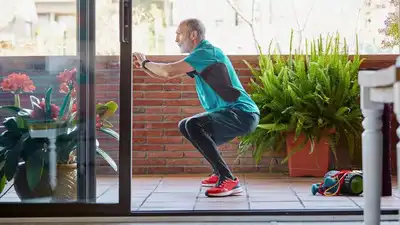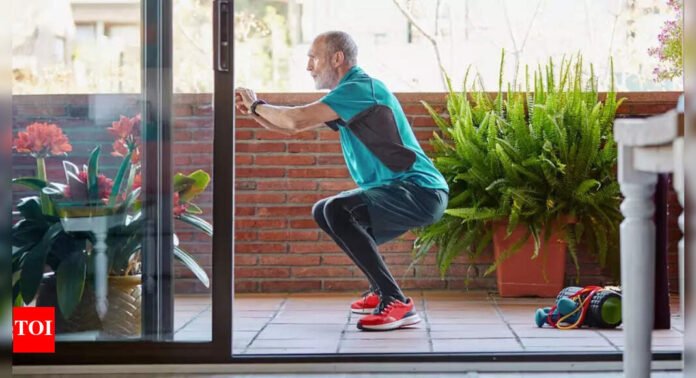Squats: Your Simple Anti-Ageing Exercise

Think fitness means spending hours at the gym? Think again. Before you start, know the difference between just moving and truly boosting your health. Physical activity is any movement, like chasing your pet or dancing. Exercise is more focused, like a brisk walk or yoga. Fitness is your body’s overall ability to stay strong. It involves your heart, lungs, brain, and hormones. The best part? You don’t need fancy equipment to stay youthful—just the right kind of movement.
Squats: An Anti-Ageing Exercise You Can Do Anywhere
Staying strong and mobile as you age doesn’t require a gym membership or intense cardio. Experts say a simple movement—the squat—can help maintain strength, flexibility, and independence.
Research backs this up. A study in the Journal of Strength and Conditioning Research (2022) looked at squatting in adults aged 70–85. It found that both traditional squats and chair squats activate key muscle groups used in everyday movements. These include walking, rising from a chair, or climbing stairs. Dr. Joel Press, a specialist in physical medicine, noted: “These simple squatting motions target the glutes, quadriceps, and core—muscles critical for balance and injury prevention in older populations.”
Ageing Muscles Need More Than Just Walking
As we age, we lose muscle mass and strength—a condition called sarcopenia. The Centers for Disease Control and Prevention (CDC) recommends that adults over 65 engage in at least 150 minutes of moderate physical activity weekly. This should include muscle-strengthening exercises twice a week.
But walking isn’t enough. Research in Medicine & Science in Sports & Exercise (2018) found that older adults who did regular lower-body resistance training, including squats, had better mobility, walked faster, and fell less. Dr. David Behm, a co-author of the study, explained: “Squats offer functional benefits because they mimic real-life movements. They train the body in a way that supports daily independence.”
From Research to Routine: How to Squat Safely
To start, try bodyweight chair squats:
- Stand in front of a chair with your feet shoulder-width apart.
- Slowly lower your hips back as if sitting, then gently touch the chair without fully sitting down.
- Push through your heels to stand again.
- Repeat 8–10 times for 2–3 sets, gradually increasing as you get stronger.
The Squat Trick You Should Know to Stay Mobile Without a Gym
If the gym feels out of reach, simple squats—especially chair squats—can help you stay strong and independent as you age. New research shows how two common squat variations affect older adults’ muscles and joints. The findings are both reassuring and useful.
Researchers studied healthy seniors aged 70 to 85 doing two types of squats: regular bodyweight squats and chair squats. They used motion sensors and muscle tracking to measure joint movement, muscle effort, and power during both exercises.
- Chair squats (CSQ) build hip strength, improving stability and preventing falls.
- Regular squats (SQ) work the knees and ankles, aiding mobility for daily tasks like climbing stairs.
- Both squats use the same major muscle groups but engage them differently. Alternating between them gives a full lower-body workout.
Both can be done at home with no equipment, making them safe, practical, and accessible—even if you’re not a gym-goer. Strengthening your lower body helps you walk, climb stairs, and get up from chairs—all essential for staying independent. Plus, chair squats mimic real-life movements, making them especially helpful for everyday function and confidence.



